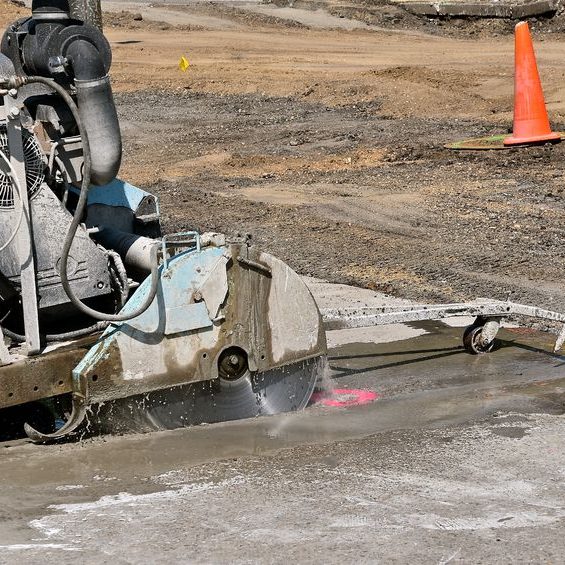Road Sawing Melbourne: Understanding the Process and Best Practices for Efficient Road Construction
Road construction is a complex and multifaceted process that requires careful planning, precise execution, and adherence to best practices. Understanding the key steps involved is crucial for ensuring the efficiency and success of any road construction project. Road Sawing Melbourne explores the various stages that constitute the road construction process.
The foundation of successful road construction projects lies in meticulous planning and design. Engineers and planners assess the geographical and environmental aspects of the area, traffic patterns, and the purpose of the road. Detailed blueprints are created, taking into consideration factors such as road width, alignment, and slope.
Once the design is finalized, the construction site undergoes preparation. This involves clearing vegetation, removing obstacles, and ensuring proper drainage. The site must be level and stable to provide a solid base for construction activities.
Earthmoving equipment is employed to excavate and shape the terrain according to the design specifications. This phase involves concrete cutting and filling to achieve the desired road profile. Proper compaction is crucial to prevent settling and ensure the road's stability over time.
The subbase layer provides additional support to the road and helps in distributing the load. The base course, typically made of crushed stone or gravel, serves as the foundation for the asphalt or concrete pavement. Quality control is paramount at this stage to guarantee a durable and long-lasting road.
The choice between asphalt and concrete depends on factors like traffic load, climate, and budget. Asphalt is commonly used for its flexibility and quicker construction, while concrete offers durability and requires less maintenance. The pavement layer is carefully laid to achieve the desired thickness and smoothness.
Proper drainage is vital for preventing water accumulation and erosion, which can compromise the road's integrity. Culverts, stormwater drains, and other drainage systems are installed to redirect water away from the road.
To ensure the safety of road users, signage and road markings are strategically placed. This includes road signs, lane markings, and other indicators to guide drivers and pedestrians.
Throughout the construction process, rigorous quality control measures are implemented. This involves testing materials, inspecting workmanship, and ensuring compliance with design specifications. Quality assurance is essential for delivering a road that meets safety and durability standards.
Once the road is constructed, landscaping and restoration efforts take place. This includes planting vegetation, restoring disturbed areas, and implementing erosion control measures.
The final step involves developing a comprehensive maintenance plan. Regular inspections, repairs, and proactive maintenance are essential to extend the life of the road and ensure its continued functionality.

Leveraging Advanced Technologies for Efficient Road Construction Projects
Efficiency in road construction is a constant pursuit, and the integration of advanced technologies plays a pivotal role in achieving this goal. As the concrete cutting industry evolves, embracing cutting-edge innovations becomes essential for enhancing productivity, reducing costs, and ensuring the overall success of construction projects. Road Sawing Melbourne shares how advanced technologies are transforming the road construction process.
BIM is revolutionizing road construction by providing a three-dimensional digital representation of the project. This technology enables stakeholders to visualize the entire construction process, identify potential issues, and optimize designs before physical construction begins. BIM enhances collaboration among different project teams, fostering better communication and reducing the likelihood of errors.
Global Positioning System (GPS) technology combined with machine control systems has significantly improved the accuracy and efficiency of earthmoving equipment. Construction machinery equipped with GPS sensors allows for precise grading and excavation, reducing material waste and ensuring the adherence to design specifications.
Drones have become valuable tools for surveying and monitoring construction sites. They can quickly and accurately survey large areas, providing high-resolution maps and 3D models. Drones also facilitate regular site inspections, allowing project managers to identify issues early, monitor progress, and make informed decisions in real-time.
Telematics systems provide real-time data on the location, usage, and performance of construction equipment. Fleet management software allows project managers to optimize road sawing equipment usage, schedule maintenance proactively, and reduce downtime. This technology enhances operational efficiency and contributes to overall project cost savings.
The integration of automated and robotic construction equipment is streamlining various construction tasks. Autonomous vehicles and robotic systems can perform tasks such as grading, paving, and material handling with precision and consistency. This not only accelerates construction processes but also improves worker safety by automating repetitive and potentially hazardous tasks.
Innovations in 3D printing technology are making their way into road construction by offering a sustainable and efficient alternative for creating construction materials. 3D printing can produce complex shapes and structures with reduced material waste, contributing to a more sustainable and cost-effective construction process.
Smart compaction technology involves the use of sensors in compaction equipment to monitor soil stiffness in real-time. This ensures uniform compaction and helps prevent issues such as uneven settling over time. The result is a more durable road structure with improved long-term performance.
AR technology enhances the design and visualization process by overlaying digital information onto the physical construction site. This allows stakeholders to visualize how the finished project will look and identify potential design clashes or construction challenges before they arise, saving time and resources.
Incorporating advanced materials, such as high-performance asphalt mixtures and recycled materials, contributes to the sustainability of road construction projects. These materials enhance the durability of the road, reduce environmental impact, and promote long-term cost savings.
Real-time project management software enables seamless communication and collaboration among project teams. It provides a centralized platform for scheduling, budgeting, and tracking project progress. This technology improves project transparency, reduces delays, and enhances overall project management efficiency.
Factors Influencing the Depth of Cutting Suspended Concrete Slabs
Factors influencing the depth of cutting suspended concrete slabs in construction projects are multifaceted and crucial for ensuring both efficiency and safety in concrete cutting operations. Concrete cutting, particularly road sawing, plays a pivotal role in various construction projects, from creating flat asphalt surfaces to cutting service stations and petroleum facilities. The depth of cutting is influenced by several key factors.
Firstly, project requirements and specifications heavily dictate the depth of cutting. Different projects may require varying depths of cutting depending on the intended use of the concrete surface. For instance, road construction projects may necessitate deep cutting compared to paved walkways or service stations. Meticulous planning is essential to accurately determine the required depth and ensure structural integrity and safety.
Secondly, material properties of the concrete surfaces being cut play a significant role. Factors such as concrete strength, composition, and thickness impact the depth to which the concrete can be cut safely and effectively. Concrete cutting operators must possess valuable insights into material properties to adjust cutting parameters accordingly and avoid compromising the structural integrity of the slabs.
Moreover, safety measures and protocols are indispensable in determining the depth of cutting. Operators must adhere to strict safety practices and wear appropriate personal protective equipment (PPE) such as safety glasses and steel-toed boots. Additionally, regular inspections of road sawing equipment are necessary to ensure its proper functioning and mitigate potential risks. Diesel road saws equipped with diamond blades are commonly used in road sawing operations, and their maintenance and calibration are critical for achieving accurate cutting depths while minimizing environmental impact and hazards. When finding the best concrete cutters, prioritize experience, technology, safety practices, versatility, and reputation to ensure the success of your construction project.
Furthermore, environmental considerations and eco-friendly practices are increasingly important in modern construction projects. Concrete-cutting operators must employ fume-less or low-emission equipment and adopt eco-friendly practices to minimize the environmental impact of their operations, particularly in sensitive and hazardous projects or areas with underground utilities. By integrating safety protocols, material knowledge, and environmental consciousness, concrete-cutting operators can optimize cutting depths while safeguarding the well-being of workers and the surrounding environment.
Balancing Cost and Quality in Road Construction: Best Practices for Project Managers
Effective road construction involves a delicate balance between managing costs and ensuring the highest quality outcomes. Project managers play a critical role in navigating this dynamic landscape, requiring a strategic approach to budgeting, resource allocation, and quality control. Concrete Road Sawing Melbourne explains the best practices that project managers can adopt to achieve optimal results in road construction projects.
The foundation for cost-effective and high-quality road construction lies in meticulous project planning. Project managers should conduct a comprehensive analysis of project requirements, considering factors such as materials, equipment, labor, and potential risks. A well-thought-out plan sets the stage for informed decision-making throughout the construction process.
Precise cost estimation is crucial for budget adherence. Project managers must conduct detailed assessments of material costs, labor expenses, equipment usage, and overheads. By accounting for potential contingencies and unforeseen challenges, they can create more realistic budgets that minimize the risk of cost overruns.
Establishing strong relationships with reliable vendors and suppliers is essential for cost-effective road construction. Project managers should seek competitive bids, negotiate favorable terms, and ensure timely deliveries of materials. Regular communication with suppliers helps prevent delays and reduces the likelihood of budgetary surprises.
Value engineering involves finding opportunities to optimize project costs without sacrificing quality. Project managers should continuously evaluate construction methods, materials, and designs to identify cost-saving alternatives. This approach encourages innovation and ensures that the project stays within budget without compromising on performance.
Adopting lean construction principles can significantly enhance efficiency and reduce waste in road construction projects. This approach emphasizes continuous improvement, eliminating non-value-added activities, and optimizing workflows. Project managers should encourage collaboration among project teams to identify and implement lean practices.
Performance-based contracts incentivize concrete contractors to meet specific quality standards within predetermined budgets. These contracts align the interests of all stakeholders, encouraging a focus on achieving project goals efficiently. Clear performance metrics and regular monitoring ensure that quality is maintained throughout the construction process.
Implementing robust quality control and assurance protocols is essential for ensuring that construction meets specified standards. Project managers should conduct regular inspections, testing, and audits to identify and rectify potential issues before they escalate. A proactive approach to quality control prevents rework and costly corrections.
Leveraging technology for real-time project monitoring enables project managers to identify deviations from the plan promptly. Construction management software, sensors, and data analytics tools provide valuable insights into project progress, allowing for quick decision-making and proactive problem-solving.
Road construction projects inherently involve uncertainties and risks. Project managers should develop comprehensive risk management strategies to identify, assess, and mitigate potential threats to the project. Early risk identification allows for the implementation of contingency plans, minimizing the impact on costs and quality.
Investing in the continuous training and skill development of project teams contributes to improved efficiency and higher-quality outcomes. Well-trained personnel are better equipped to handle challenges, implement best practices, and contribute to the overall success of the road construction project.

Environmental Challenges in Road Construction: Best Practices for Sustainable Development
As road construction projects become more prevalent, addressing environmental challenges is paramount to ensure sustainable and responsible development. Road Sawing Melbourne explores the best practices that construction professionals can adopt to minimize the environmental impact of road construction. From planning to execution, integrating eco-friendly practices is essential for the longevity of infrastructure and the well-being of surrounding ecosystems.
Prior to breaking ground, conducting a thorough Environmental Impact Assessment (EIA) is crucial. This assessment identifies potential environmental risks and allows project planners to devise strategies to mitigate these impacts. It provides insights into the ecological footprint of the project and aids in making informed decisions to minimize adverse effects.
Opting for sustainable and environmentally friendly materials is a key consideration in road construction. This includes the use of recycled and locally sourced materials, as well as exploring innovative materials that have a lower environmental impact. Sustainable material choices contribute to resource conservation and reduce the carbon footprint of the project.
Effective erosion control measures are essential to prevent soil degradation and sedimentation of nearby water bodies. Project managers should implement erosion control practices such as silt fences, vegetation cover, and sediment basins. Proper soil management techniques, including erosion-resistant vegetation, help maintain soil integrity during and after construction.
Preserving wildlife habitats in and around construction sites is crucial for maintaining biodiversity. Project managers should identify sensitive areas and implement measures to protect ecosystems. This may include creating wildlife corridors, avoiding construction during sensitive seasons, and using alternative routes to minimize disruption to local flora and fauna.
Efficient water management is essential for preventing water pollution during road construction. Implementing measures such as sedimentation basins, stormwater detention ponds, and erosion control blankets helps filter and manage runoff. Construction activities should adhere to best practices to prevent the release of pollutants into water bodies.
Minimizing the impact of construction-related noise and air pollution is crucial for maintaining the well-being of nearby communities and ecosystems. Project managers should employ technologies like noise barriers and dust control systems. Additionally, scheduling construction activities strategically can help mitigate disruptions to local residents and wildlife.
Incorporating green infrastructure elements, such as permeable pavements and vegetated swales, can enhance the environmental sustainability of road construction projects. These features help manage stormwater, reduce the heat island effect, and promote ecological balance in urban environments.
Engaging with local communities and educating them about the environmental aspects of the construction project fosters understanding and support. Regular communication channels, community workshops, and educational programs can inform residents about the measures being taken to minimize environmental impact and address concerns.
The commitment to environmental sustainability extends beyond the completion of the project. Post-construction monitoring and rehabilitation involve ongoing efforts to restore and rehabilitate disturbed areas, ensuring that the ecosystem recovers and adapts to changes introduced during construction.





